The future of the automotive industry is software-led, and IoT in Automotive will draw the map for the industry to follow. As software increasingly begins to control and shape a vehicle’s experience and development more visibly, automotive companies are increasingly utilizing automotive IoT as a catalyst to stay ahead in this competitive industry. The adoption of IoT allows automotive industry to enable automation across the value chain, from manufacturing to optimized fleet management, leading to significant improvements in efficiency and safety along the way.
Read on to uncover the game-changing role of IoT technology and how it can address the pain points of the automotive sector with smart, connected vehicles.
What is Automotive IoT?
Automotive IoT refers to the integration of devices (such as sensors, GPS trackers) and software within vehicles and across the automotive ecosystem. IoT applications leverage embedded solutions to provide real-time data that enables optimization of the car manufacturing process and more efficient transport management. The use of IoT in Automotive industry enables automobile manufacturers automate production processes, use IoT predictive maintenance to reduce downtime, and enhance bottom line. Similarly, Automotive AI helps businesses such as fleet management companies, car rentals, suppliers and component manufacturers leverage predictive maintenance, direct car-to-car interaction, AI-powered driving assistance.
The global automotive IoT market is projected to reach $322.0 billion by 2028 from just $131.2[1] billion in 2023. The following are among the major reasons driving this tremendous growth:
- A rise in directives for advanced vehicle features concerning safety, convenience, and comfort.
- The increasing popularity of Telematics.
- User-based insurance programs.
Let’s now explore the many reasons for integrating IoT in the automotive sector and how IoT can help to stay ahead in the game.
IoT Use Cases in Automotive Industry
When we talk about integrating IoT into vehicles, it’s not just about connecting cars to the internet, it’s a much broader concept. IoT enhances multiple facets of the automobile industry, including data analytics, automation mechanisms, advanced connectivity, and even the visionary development of fully autonomous vehicles. Here’s a look at some IoT applications in automotive industry.
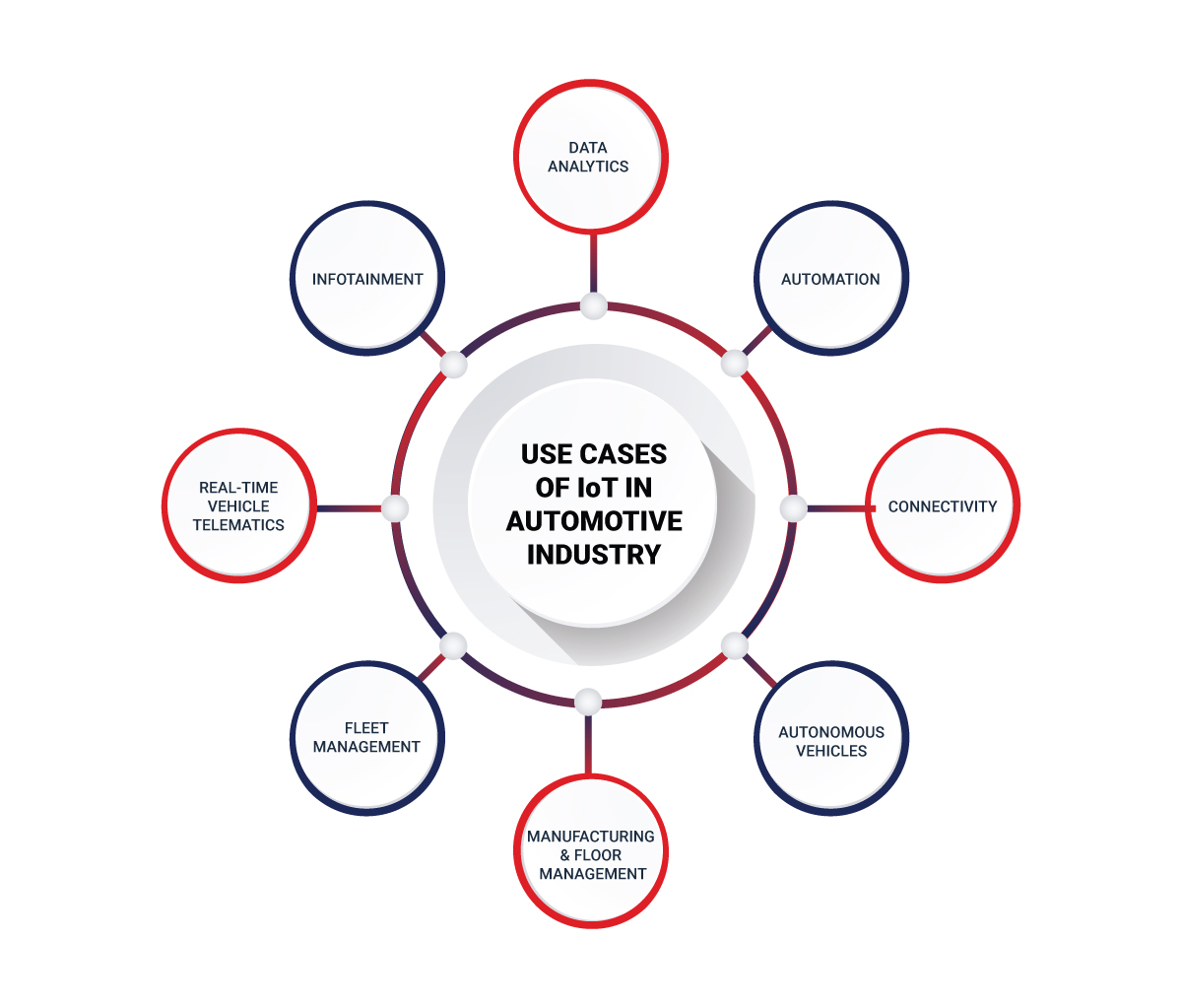
Data Analytics
Data analytics in IoT for the automotive industry includes collecting and analyzing vast amounts of data produced by interconnected vehicles and their surroundings. This information enables manufacturers and service providers to make informed decisions regarding vehicle performance, maintenance, and even driver behavior. By leveraging data analytics, companies can predict potential failures, optimize fuel efficiency, and create personalized services tailored to each driver’s needs.
Furthermore, with the help of predictive analytics, manufacturers can develop innovative features that cater to customers’ desires, such as personalized entertainment and improved connectivity
Automation
IoT’s ability to automate various car operations has made significant strides forward. The ability to automate significantly complex tasks, such as parallel parking or maintaining safe distances from other vehicles, enhances safety while reducing stressful situations for drivers. This profound integration of IoT technology is a clear step towards creating an autonomous driving future.
Connectivity
When it comes to connectivity, IoT is firing on all cylinders. It allows vehicles to seamlessly connect with smartphones, home devices, other vehicles, and smart city infrastructure. The Vehicle-to-Everything (V2X) concept can play a significant role in traffic management, collision avoidance, and overall enhancement of driving experience.
Autonomous Vehicles
Autonomous or self-driving cars rely heavily on IoT for an enormous amount of real-time data collection, processing, communication, and sensor fusion. IoT devices in these vehicles collect data to facilitate seamless navigation, predictive modeling, and vehicle-to-vehicle communication to navigate around obstacles for safer and more efficient transportation.
Streamlined Manufacturing & Floor Management
On production lines, IoT devices and sensors operate in real-time, meticulously monitoring machine performance, tracking inventory levels, and analyzing production data
Effective Fleet Management
IoT technology takes the wheel in the transportation industry by enabling real-time tracking and monitoring of vehicles. IoT-enabled fleet management system provides several benefits to fleet managers ranging from remote diagnostics to real-time location monitoring to fuel management and efficiency. A notable example is DHL’s SmarTrucking solution, utilizing IoT sensors for real-time fleet data, optimizing scheduling, and enhancing route efficiency.
Real-Time Vehicle Telematics
It is one of the significant automotive IoT use cases and involves cloud-connected IoT boxes or Telematics Control Units (TCUs) linked to telematics devices. This technology provides real-time data on driver health, behavior and vehicle status leading to enhanced efficiency, reduced costs and improved safety. It enables the tracking of vehicle movement, optimizing routes, traffic updates, parking availability and behavior within a fleet. Vehicle owners can remotely monitor their vehicles, utilizing features such as remote speed limit controls, access to operation data, and collision notifications to third parties and emergency responders.
Infotainment
In today’s automotive landscape, nearly every new car features a center dashboard screen housing the vehicle’s infotainment system. The fusion of connected cars and in-car entertainment represents a flourishing facet of IoT in automotive industry. Infotainment systems, whether vehicle-specific like Kia’s UVO or mobile-compatible like Samsung’s Exynos Auto, offer a range of features such as speech-activated navigation, texting, and calls. The integration of vehicle audio systems with personal smart devices, exemplified by Apple’s CarPlay, showcases the seamless connectivity that defines the relationship between connected cars and infotainment systems.
Benefits of IoT in Automotive Industry
The Internet of Things in automotive industry promotes seamless integration and offers multiple benefits such as:
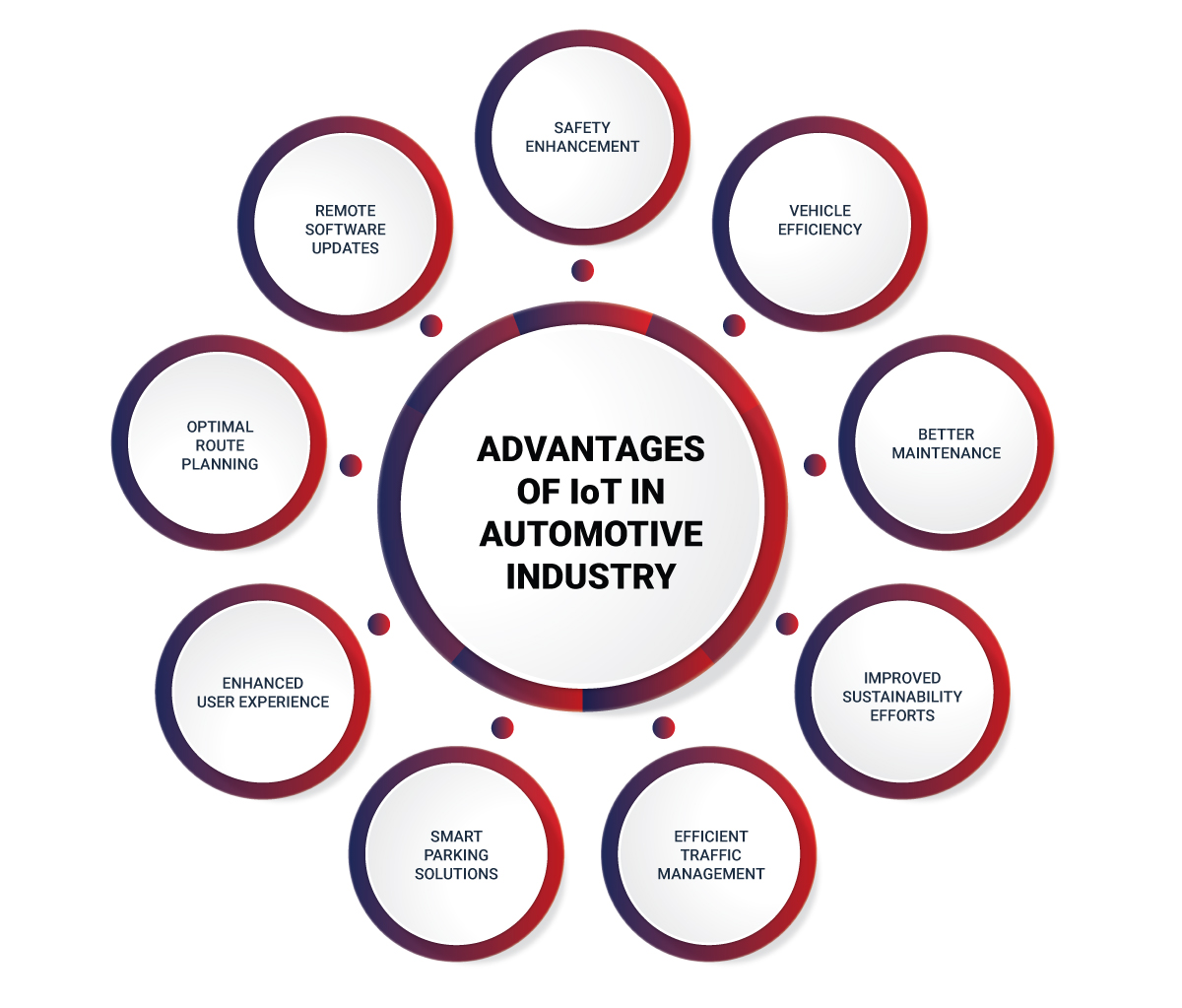
Safety Enhancement
With the increasing complexity of traffic scenarios, IoT plays a pivotal role in enhancing vehicle safety. Connected cars and traffic infrastructure can communicate with each other, reducing the risk of accidents.
Enhanced Vehicle Efficiency
By leveraging machine learning algorithms and IoT technologies, predictive analytics can potentially enhance vehicle efficiency by uncovering data patterns. This optimization can significantly enhance various transportation and driving functions, including braking, steering, and fuel consumption.
Better Maintenance
Rather than depending on reactive maintenance or routine inspections, IoT enables predictive maintenance which allows for remote identification of potential vehicle issues before they escalate into major breakdowns. Utilizing advanced sensors, data analytics, and machine learning technologies, vehicles can be continuously monitored in real-time, enabling predictive maintenance to prevent failures and ensure optimal conditions at all times.
Improved Sustainability Efforts
Utilizing automotive IoT technology not only enhances engine performance and minimizes vehicle emissions but also contributes to overall sustainability.
Efficient Traffic Management
IoT enables intelligent traffic management systems by collecting and analyzing data from connected vehicles. This data can help optimize traffic flow, reduce congestion, and minimize environmental impact.
Smart Parking Solutions
Smart parking solutions powered by IoT help drivers find parking spaces more efficiently, reducing traffic congestion and emissions. It also helps maximize the utilization of existing parking space and facilitates easier traffic flow.
Enhanced User Experience
Connected vehicles offer a seamless and personalized driving experience. IoT technology enables voice-activated assistants, in-car entertainment, navigation, and climate control systems to adapt to individual preferences. IoT sensors gather information about the driver’s chosen seating position, music preferences, temperature settings, etc. This data enables the delivery of increasingly personalized driving experiences for the individual behind the wheel.
Optimal Route Planning
IoT systems, armed with live data on road conditions, weather patterns, and vehicle performance can precisely calculate and determine the most efficient routes. This meticulous planning not only leads to shorter delivery times but also contributes to elevated customer satisfaction and substantial cost savings.
Remote Software Updates for Cars
The convenience of over-the-air software updates in IoT-connected cars simplifies the process for both drivers and manufacturers. This practice not only streamlines software upgrades but also significantly enhances overall vehicle performance. The capability to distribute patches promptly in response to vulnerabilities is a testament to the agility of IoT in the automotive industry.
Major Automotive Industry Players at the Forefront of IoT Adoption
As the automotive industry accelerates towards a connected and technologically advanced future, major industry players are leading the charge in adopting Internet of Things (IoT) tech. Let’s explore some leading IoT in automotive industry examples.
Tesla: Pioneering Electric and Connected Vehicle
Tesla vehicles have advanced sensors and cameras, enabling features like Autopilot and Full Self-Driving capabilities. Integrated IoT sensors in Tesla vehicles collect data on drivers’ behavior patterns, battery status, and vehicle performance. This data is transmitted to Tesla’s servers, where experts analyze it in real-time to identify and resolve problems before they become critical.
BMW: Driving Innovation with IoT Connectivity
BMW’s ConnectedDrive platform integrates IoT to provide real-time traffic information, remote vehicle control, and intelligent navigation services. IoT sensors monitor various vehicle components, sending data to BMW’s cloud for analysis, facilitating proactive maintenance, and enhancing overall reliability.
Audi: Revolutionizing Driving with IoT Integration
Audi’s Virtual Cockpit integrates IoT to deliver a fully digital instrument cluster, providing drivers with real-time information and a customizable interface. Audi’s commitment to IoT is evident in its development of the “Audi connect” platform, ensuring a seamless connection between the vehicle and the digital world.
Mercedes-Benz: Embracing IoT for Safety and Comfort
Mercedes-Benz is well-known for being innovative, and their use of IoT technology is no different. By adding their new operating system – MB.OS, along with a host of IoT features to their cars, Mercedes-Benz aims to make driving easier. Mercedes-Benz passenger vehicles have advanced driver assistance systems that use real-time data to ensure overall road safety. This includes features like blind-spot monitoring, collision prevention, and adaptive cruise control.
How Rishabh Software Can Help Leverage IoT for Automotive Industry?
From safety enhancements to personalized driving experiences, IoT is reshaping the automotive industry landscape. As companies continue to innovate, we can expect IoT to play an increasingly central role in the future of transportation.
Rishabh Software can help your business reap the benefits of automotive IoT with our IoT app development services that cover the entire lifecycle of creating industrial and consumer IoT applications. The company boasts vast automotive industry experience. Your project will be in the hands of skilled and experienced developers. Accurate planning and estimation ensures your project to be cost-effective.
The road ahead is not just connected. It’s intelligent, efficient, and remarkably exciting.
Rishabh Software’s IoT Success Story in Fleet Management

A client in the logistics and SCM sector turned to Rishabh to develop an Electronic Logging Device (ELD) mobile app with IoT capabilities for efficient fleet operations. Their goal was to enhance compliance with the Federal Motor Carrier Safety Administration (FMCSA) regulations governing Hours of Service (HOS) and eliminate paper logs.
Challenges:
- Inefficient manual fleet management methods draining resources.
- Lack of traceability impacting fuel efficiency.
- Inability to monitor vehicle idling and fuel usage.
- No oversight of federal fleet management regulation violations.
Our dynamic two-phase ELD fleet management app development involved creating a mobile app interfacing with IoT sensors and reporting data in a standardized format. Leveraging Xamarin, C#, and Bluetooth 5.0, we seamlessly integrated vital ELD components, ensuring real-time monitoring and insightful warnings for HoS rule adherence.
Key Benefits Delivered:
- Achieved 100% automation of Driver Vehicle Inspection Reporting (DVIR).
- Doubled fleet and driver efficiency.
- Boosted overall fleet profitability by a remarkable 62%.
Discover how this IoT-enabled mobile app not only ensures compliance but also propels fleet efficiency and profitability to new heights.
Frequently Asked Questions:
Q: List the common challenges with IoT in the automotive industry and their solutions.
A: Let’s understand some common challenges of implementing IoT in the automotive industry and explore ways to address them:
Challenge: The complex nature of developing IoT solutions for smart vehicles poses challenges in developing software, hardware, and connectivity.
Solution: Highly skilled development teams proficient in embedded systems, cloud technologies, and cybersecurity can help with implementing robust solutions.
Challenge: Safeguarding data transmission, protecting systems from cyber threats, and ensuring user privacy is vital.
Solution: It can be addressed by employing advanced encryption methods, secure communication protocols, and robust cybersecurity measures to safeguard the entire IoT ecosystem.
Challenge: Achieving standardization across diverse IoT devices in smart vehicles can lead to interoperability issues.
Solution: It can be mitigated by adhering to industry standards, fostering collaboration for interoperable solutions, and leveraging platforms supporting seamless integration.
Challenge: Ensuring continuous functionality and reliability, especially in safety-critical scenarios.
Solution: Can be addressed by employing redundancy mechanisms, failover systems, and rigorous testing procedures to mitigate the impact of potential failures.
Challenge: Adhering to evolving regulatory standards and legal frameworks.
Solution: Achieved by staying informed about industry regulations, ensuring compliance with data protection laws, and proactively aligning IoT solutions with legal requirements.
Q: What are the key points to consider when developing an automotive IoT application?
A: Listed below are the key factors to consider for developing a robust and reliable IoT-powered automotive application:
Market Analysis:
- Understand target audience, identify user needs and analyze the competitive landscape and existing solutions for differentiation opportunities.
- Assess business viability, considering revenue models and subscription options.
Development Team:
- IoT Specialists: Include experts in sensor integration, data analytics, and secure communication.
- UX/UI Designers: Build intuitive and user-friendly interfaces for various platforms.
- Security & Privacy Experts: Design secure architecture and data handling practices.
Tech Stack:
- Scalable Cloud Infrastructure: Choose a platform that can handle real-time data and future growth.
- Robust Programming Languages: Select languages suitable for IoT development, data processing, and UI/UX.
- Open-Source Tools: Leverage available libraries and frameworks for faster development and efficiency.
Integration Complexity:
- Ensure seamless integration with in-vehicle systems, cloud platforms, and external infrastructure. Prioritize modularity and scalability for future enhancements.
User Experience (UX):
- Design intuitive interfaces for vehicles, mobile apps, and dashboards, focusing on safety and minimal distractions.
- Personalize features based on user preferences and driving habits.
- Ensure to maintain consistency across different devices and platforms.
Testing & QA Challenges:
- Conduct rigorous testing across various scenarios, platforms, and devices. Also, implement continuous monitoring for performance and bug detection.
- Prioritize security testing with robust authentication and encryption protocols.
Regulations and Compliance:
- Ensure adherence to relevant data privacy regulations and automotive safety standards.
Having a team of experienced IoT app developers can help you prioritize security, optimize tech stacks, and ensure scalability with streamlined development of an impactful automotive app.
Footnotes:
1. https://www.marketsandmarkets.com/PressReleases/automotive-iot.asp
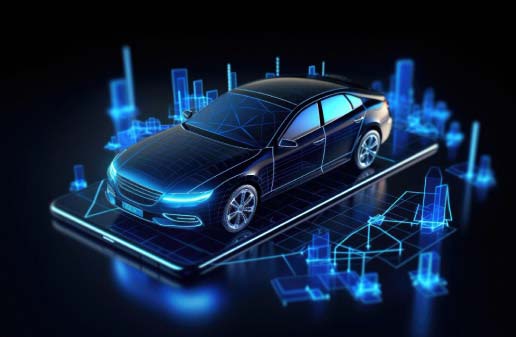
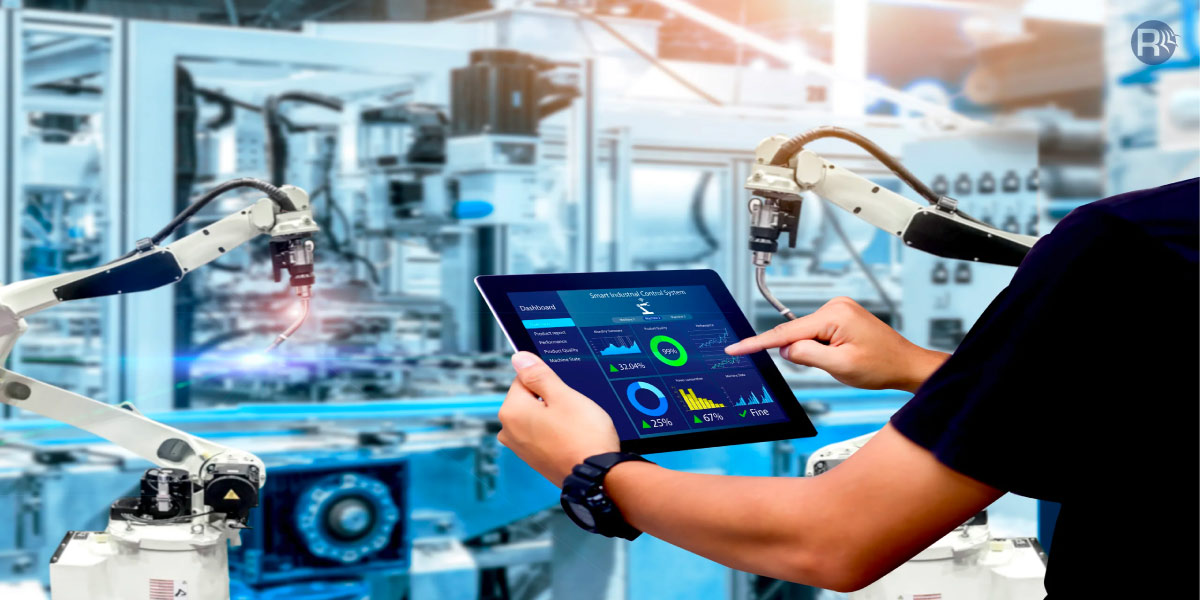
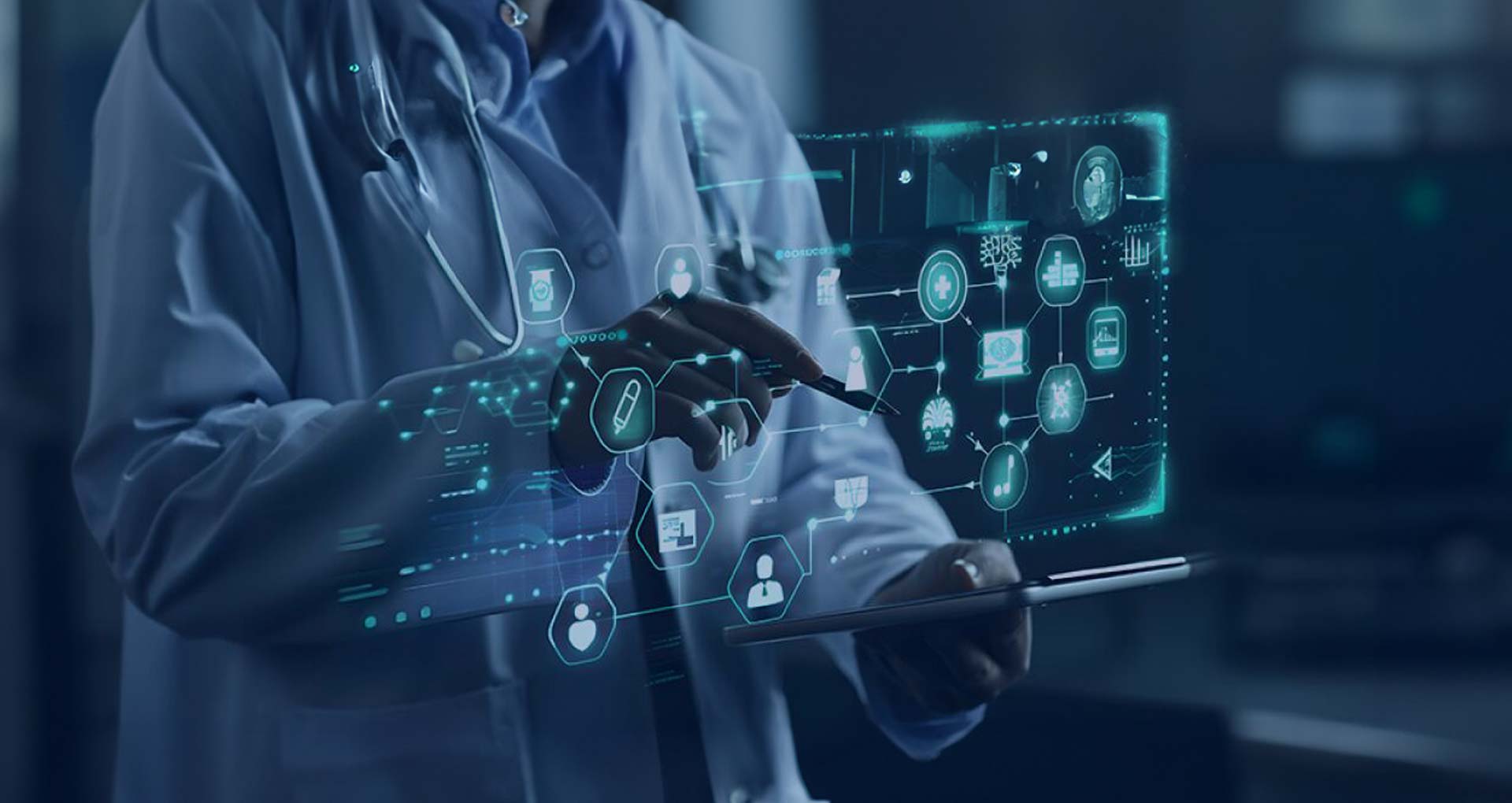
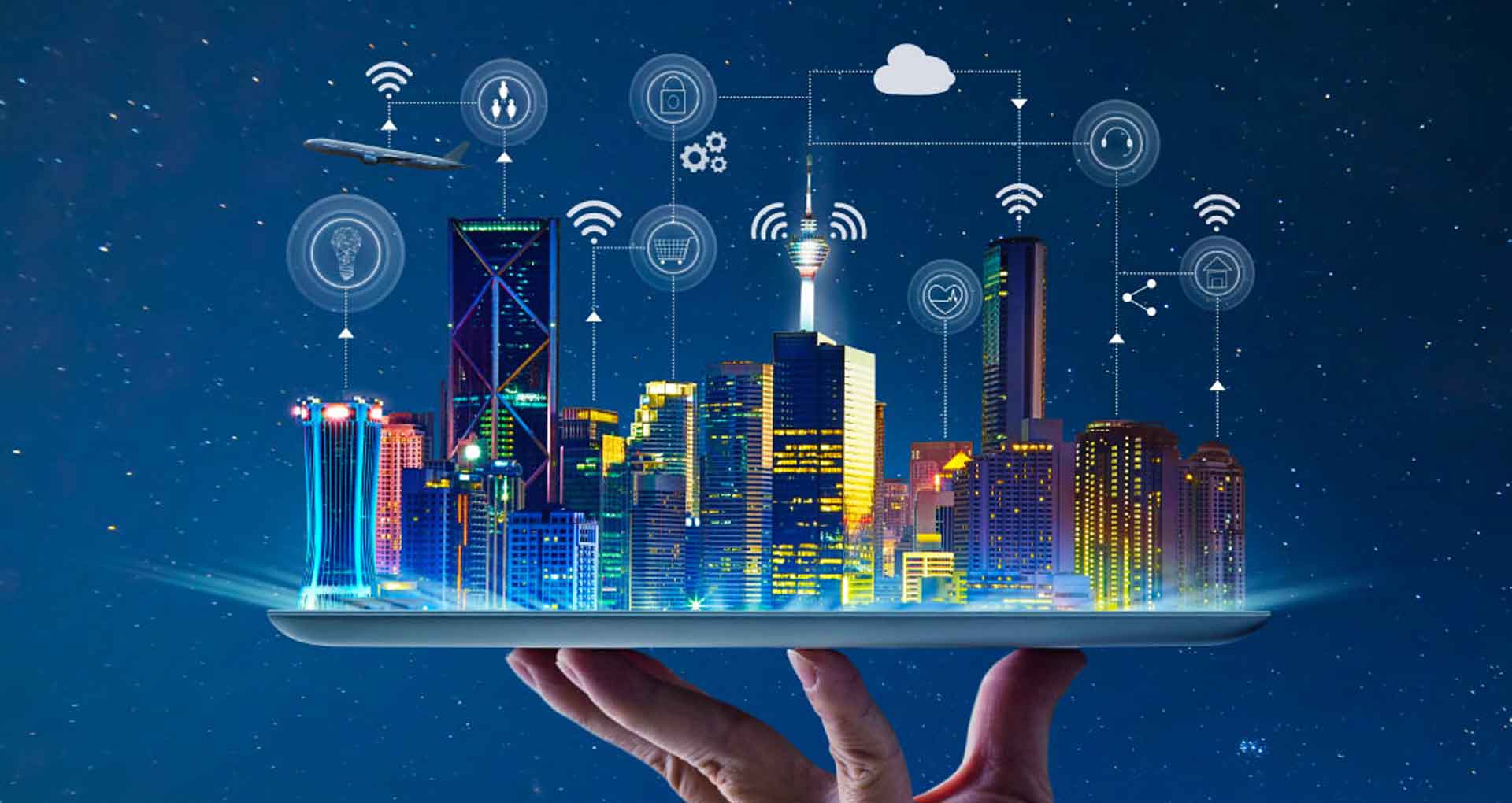

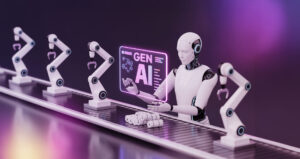
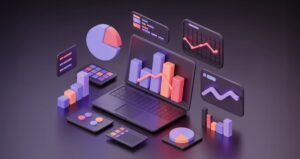
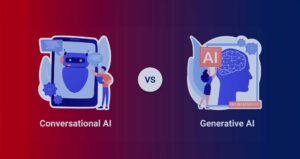


 30 Min
30 Min


